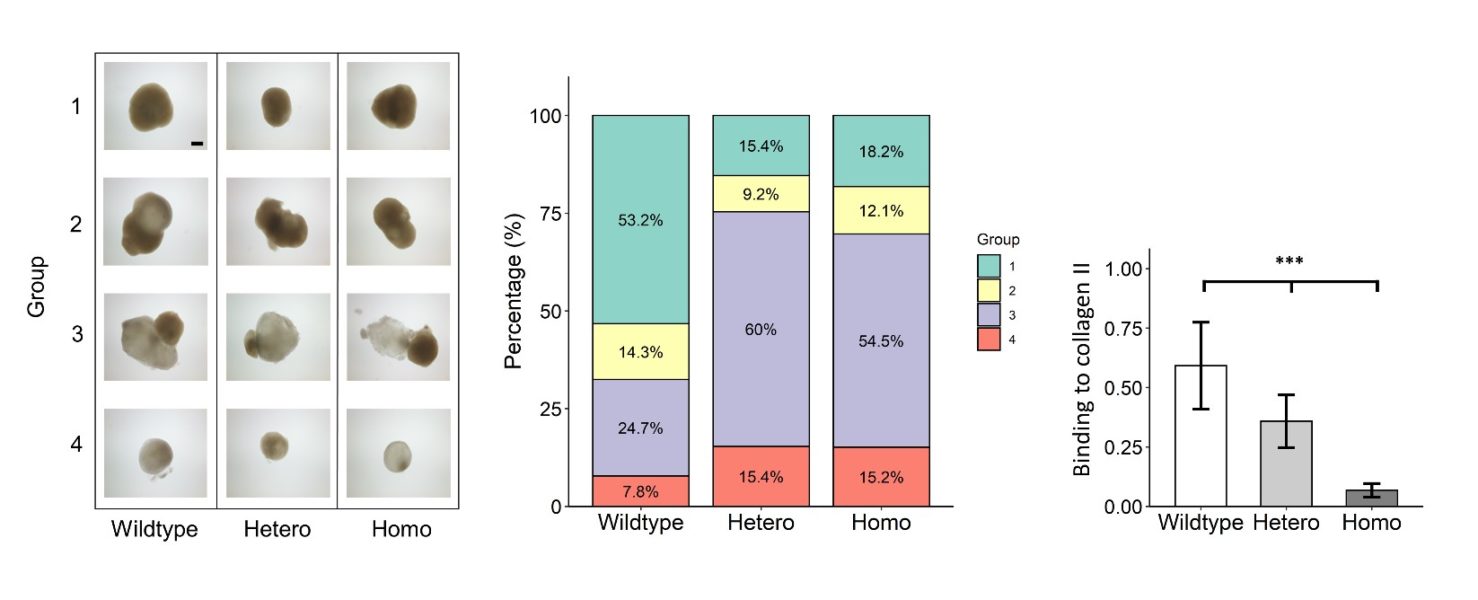Marcella’s latest publication in Science Advances is out now!
Science Advances published the work of Marcella van Hoolwerff et al, where a high impact mutation was identified by exome sequencing in FN1 in affected family members of an early-onset osteoarthritis family. Upon introducing this mutation in an in vitro OA disease model using human induced pluripotent stem cell and CRISPR/Cas9 technology, the authors found that the mutation decreased chondrogenic potential of the iPSC-derived chondrocytes as a result of decreased binding of fibronectin to collagen type II.
In this study, the authors combined exome sequencing and genotyping to identify the causal mutation in an early-onset osteoarthritis family. To gain insight in the underlying mechanism, the mutation was introduced in human induced pluripotent stem cells with CRISPR/Cas9, which were used in an in vitro organoid cartilage model. Particularly, the authors show that the underlying pathogenic mechanism of the mutation was caused by a decreased binding of fibronectin to the surrounding extracellular matrix protein collagen type II. As a result, the chondrocytes became prone to an OA disease state, reflected by changes in gene expression levels of ADAMTS-5 and integrin subunits.
The work from this study was a collaboration between the group of Ingrid Meulenbelt and the LUMC iPSC core facility, the group from Farshid Guilak Washington University, St. Louis, and the LUMC electron microscopy facility and was published in Science Advances.

